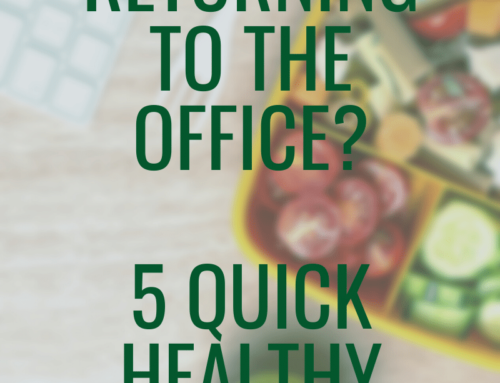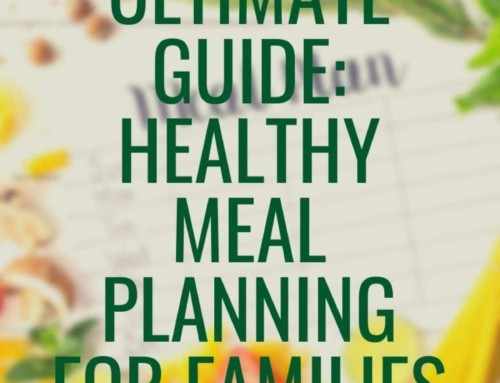Tips to Decrease Food Waste at Home
April 22 was Earth Day, an annual global event to bring awareness and demonstrate support for environment protection. For many of us, the adage “Reduce, Reuse, Recycle” is a familiar one that we try to follow every day. But, for the most part, we typically think of this in terms of packaging items. Did you know the US is the global leader in food waste? According to the US Department of Agriculture (USDA), Americans waste more than $161 billion each year on food with dairy products and produce being the food items we toss out most often.
Why do we waste so much? Before we can figure out how to decrease food waste, we need to understand the reasons why so much food goes to waste.
Misunderstanding of food label product dates
Food spoilage is certainly a concern. No one wants to take a chance with eating spoiled food. But, there is quite a bit of misinterpretation regarding product dates on food packaging. Product dates refer to a product’s quality or freshness and are often confused with an expiration date, which refers to a product’s safety. With the exception of infant formula, which is the only product required by federal guidelines to have a product date, the dates that you see on your food packaging are designated by the product manufacturers and imply quality not safety. When a food is handled properly at home, it can often be eaten well past the date on the label.
- Best if used by indicates when a product will taste the best or be the best quality.
- Sell by tells the store how long to display the product for sale for inventory management.
- Use by date is the last date recommended for the use of the product while at peak quality.
- Freeze by indicates when a product should be frozen to maintain peak quality.
Overbuying
This happens to all of us, right? You go to the store without a plan or a list and try to buy groceries from memory of what you think you need. The best way to ensure you don’t overbuy is to meal plan, create a shopping list from your plan and stick to the list once you are at the store. If meal planning is new to you, take a look at some of my pre-made family meal plans here. Meal planning not only keeps you from purchasing more than you need, but also keeps you organized throughout the week. And, meal planning gives you one less thing to think about on busy evenings when you plan ahead.
Another tip to keep you from overbuying is to make smaller portions of new recipes. If you are trying out something new with your family and are not sure how it will go over, make less. This way if they don’t like it you won’t have to toss it (or as much of it).
Underutilizing portions of fresh foods
Leaves, stems, stalks and rinds don’t have to be thrown out. You can use them in a number of different ways to enhance recipes or extend your produce.
- Turn leafy greens that are on their way out into pesto.
- Blend fresh herb stems and stalks in a blender with olive oil for a flavorful herb oil.
- Stale bread can easily be turned into croutons.
- Keep citrus zest in airtight jars and incorporate into soups, salads, dressings and desserts.
- Use meat and poultry bones to make homemade stock.
- You can spiralize broccoli or cauliflower stalks to be sautéed.
- Repurpose your leftovers, read more on how to creatively repurpose your leftovers here.
Food waste not only affects your wallet, but also has a big effect on the environment. Food that is thrown out ends up in the landfills and contributes to methane gas emissions. About 22% of municipal solid waste is food. Below are some other ways to keep food out of the landfill and keep money in your pocket.
Proper Storage at home
Keep your fridge at the optimum temperature and humidity for dairy, produce & fresh meats. Your fridge should stay between 37-40F. Use crisper drawers for produce to control the humidity. Set the drawer humidity control on high for leafy vegetables and low for citrus. You can keep your drawer control in the middle for most other produce or if you are mixing produce together.
Remember to buy produce when it’s in season and cheaper. Buy a little extra and freeze it to use later. Fresh produce stored properly in the freezer can keep well for 12 months.
Compost at home
Compost is decomposing organic material. It is rich in plant nutrients and beneficial organisms. It also reduces landfill waste. Composting can be an inexpensive nutrient addition to your home garden or other plants. You can easily compost outside or create an indoor composting pot if you don’t have the yard space. Some items that can be composted are:
- Produce
- Egg shells
- Tea bags/coffee grounds
- Nut shells
Not everything should be composted. These items are not recommended for compost as they can attract rodents.
- Dairy products
- Fats & oils
- Meat or fish scraps
Every little bit helps. We can make a big impact by implementing small changes at home to improve the planet and save a little money. These are just a few tips to get you thinking about your own habits at home. There are endless ways to reduce, reuse and recycle. Leave a comment and let us know what other tips work for you.





Leave A Comment